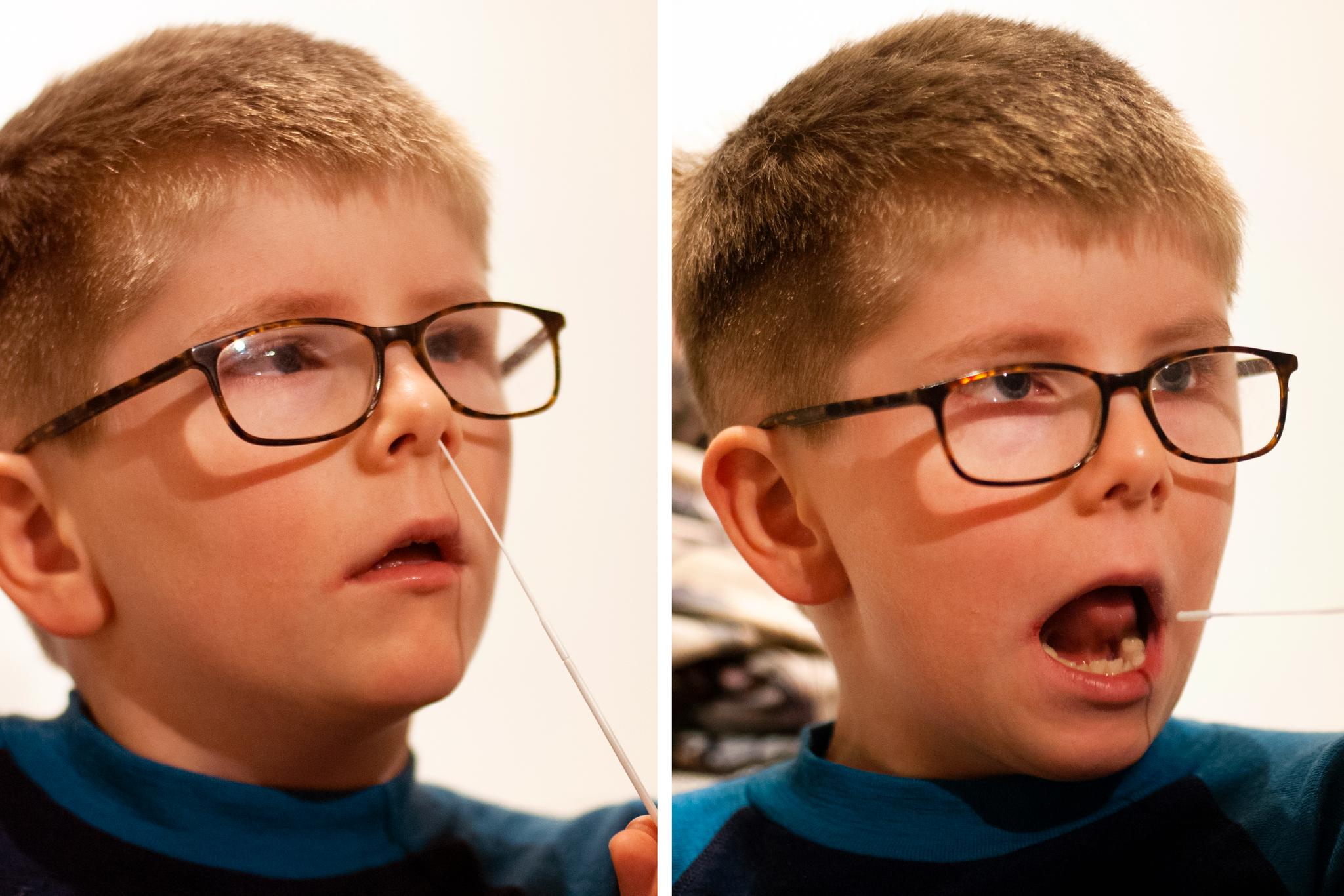Have you heard of someone who tests negatively on rapid tests in the nose, but positively when the stick is taken in the mouth? FHI is now considering whether we should test differently in Norway to find omicrons.
On Wednesday, representatives from the public health authorities in all countries in Europe met. Main theme was quick tests and omicron. That’s the big topic of discussion out there right now. How effective are the rapid tests in detecting the new virus variant? And are we testing properly?
Joakim Øverbø is a doctor at the National Institute of Public Health. He attended the European Cooperation Meeting.
– There is great interest in this, both among the authorities in several countries, in the media and in the population, he says.
And much of the “talk ice” lies in the many individual stories that FHI has also heard. People have tested negative when they test themselves with rapid tests in the nose. Then they take the test stick in the throat and test positive.
FHI has also received several inquiries from municipal doctors around the country. They wonder which test method is best. For what applies now?
– This is something we are looking at. But we are still unsure whether there is any difference in which test method is most effective in capturing this, says Øverbø.
Not made for neck
There are some small studies that indicate that the amount of virus in the omicron variant is higher in the throat and saliva than in the nose. But it may be due to coincidences.
NIPH is now considering whether to change the operating instructions for rapid tests, but is awaiting more studies and more documentation.
One of the main problems is that the tests are not approved for use in the throat. If one is to change their use, it must be well enough professionally documented.
– It takes a bit to recommend a different use than what a test is made for. But it is possible to give national exceptions if we are sure that it has something to do with it, says Øverbø.
Other countries test in the throat
England uses rapid tests in both throat and nose. In Israel, the new recommendation is to test yourself three days after close contact with an infected person, since early tests can have a false negative. The test strip should then be used first in the throat and then in a nostril to give a more accurate answer.
Other countries are waiting to see if they can change the method. In Germany, they do their own research. It is also done in Norway.
– We do our own research of rapid tests that are in use here. Then we cultivate the different virus variants and check how well the rapid tests detect different amounts of virus of the different variants, says Øverbø.
The rapid tests are made for the coronavirus and capture the so-called N-protein. There is little change in this protein between omicron and earlier varieties. This means that the probability that the tests will work much worse against the omicron is small.
Therefore, the rapid tests are probably effective in finding both omicron and delta.
But the question is where the different virus variants become “visible” first. The throat or the nose?
– This is something we follow closely. We make sure that we bring with us new knowledge and share knowledge within Europe.
The vomiting reflex
It may seem that the omicron variant has a slightly different way of entering the cells. That it thrives better in the airways and not in the lungs. But then you have to find out if it has an effect on the amount of virus in your mouth and nose.
If there is a throat test, there are probably many who are afraid of discomfort by vomiting when the stick goes down the throat.
FHI suggests that it is easier to see yourself in the mirror while scraping gently with the stick to avoid the vomiting reflex.
And if it turns out that a good amount of virus is in the saliva, in that case you can just take the stick along the inside of the cheek.
– This is what we have to find out. Is it in the nose, saliva or back of the throat – and how should we do it.
– It is very uncertain whether we will change the use. We have to wait for better data, says Øverbø in FHI.
–


